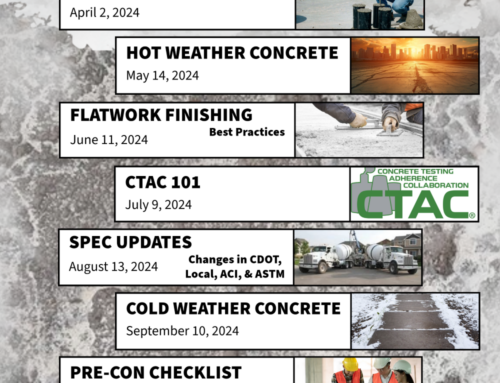Prizes Awarded to Students for Innovative, Sustainable Designs
The Colorado Ready Mixed Concrete Association is proud to partner with NRMCA, Build With Strength, Habitat for Humanity and the Association of Collegiate Schools of Architecture (ACSA) in supporting the ACSA 2022 Habitat Competition for Climate Positive Concrete Housing.
A huge congratulations to all the winners, comprised of outstanding student project submissions.
A special congratulations to the two winning projects showcasing sustainable and affordable housing options in Avon, Colorado AND to the University of Colorado Denver students who also had winning submissions.
West Region Winner:
Project Name & Location: INTER[B]LOCK, Avon, Colorado
Student: Abby Loftus
Faculty Sponsor: Margaret McManus
Institution: Savannah College of Art and Design
Honorable Mention:
Project Name & Location: RING’ HABITAT, Avon, Colorado
Student: Sanket Gunjal
Faculty Sponsor: Margaret McManus
Institution: Savannah College of Art and Design
______________________________________________________________________
South Region Winner:
Project Name & Location: 1717 ANDRY ST. PRECAST PROTOTYPE, New Orleans, Louisiana
Students: Ryan Bramlett & Nikolas Makela
Faculty Sponsor: Matthew Shea
Institution: University of Colorado Denver
Honorable Mention
Project Name & Location: PULELEHUA – PRECAST CONCRETE HOUSING, Hilo, Hawaii
Students: Jason Kennell & Lucas Wylie
Faculty Sponsor: Matthew Shea
Institution: University of Colorado Denver
View the winning projects here.
More about the ACSA 2022 Habitat Competition…
THE CHALLENGE
The 2022 Habitat Design Competition: Climate Positive Concrete Housing challenges students to design affordable multi-unit housing in one of seven North America regions. The need for affordable housing types has never been greater. Populations are fluctuating, given the cost of living, change to commuting, and a range of quality-of-life options. Today’s housing problems are difficult, but architects are in a unique place to envision innovative solutions to the housing crisis that affects us all.
NRMCA members through the Build with Strength initiative will donate concrete for the construction of Habitat projects and will work directly with local Habitat organizations to support home builds across North America. Habitat works toward a vision by building strength, stability and self-reliance in partnership with families in need of decent and affordable housing. Habitat homeowners help build their own homes alongside volunteers and pay an affordable mortgage.
SITE / CLIMATE
Students will select one of 7 regions with differing climates to create a design that meets the minimum requirements of Habitat for Humanity U.S. Construction standards. Jurors will select a winner from each of the 7 regions. The regions focus on North America (US, Canada & Mexico):
CONCRETE
In its simplest form, concrete is a mixture of paste and aggregates. The paste, composed of Portland cement and water, coats the surface of the fine and coarse aggregates. Through a chemical reaction called hydration, the paste hardens and gains strength to form the rock-like mass known as concrete. Concrete is one of the world’s oldest building materials, and for good reason: concrete is easily transportable in its liquid state, and can be formed into large structures on site.. It is poured as a liquid but hardens like rock, resists fire and water, and can be recycled. Twice as much concrete is used in construction around the world as all other materials put together.
SUSTAINABILITY
Architects play a crucial role in addressing both the causes and effects of climate change through the design of the built environment. Sustainability involves not only energy efficient, or net-zero emission structures, but also construction methods, means and materials that have a low, or even negative embodied carbon. As we face the climate crisis, it is critical to realize that we have very little time to offset the carbon dioxide created by the construction and use of buildings with future reductions of CO2. Therefore the competition entries will be judged on their successful inclusion of low or negative embodied carbon strategies in materials and construction processes.





